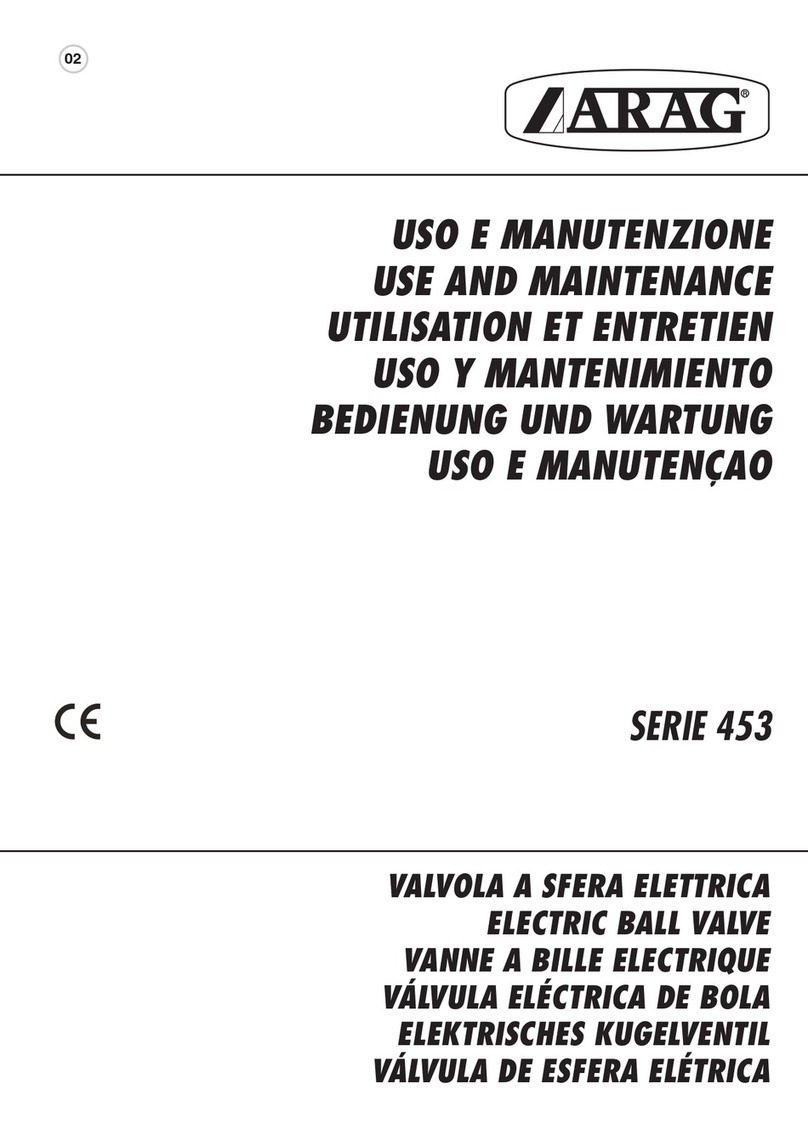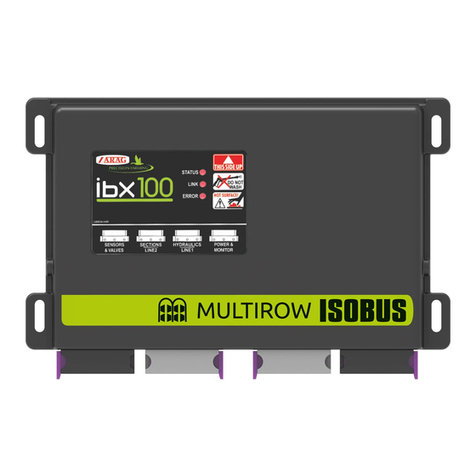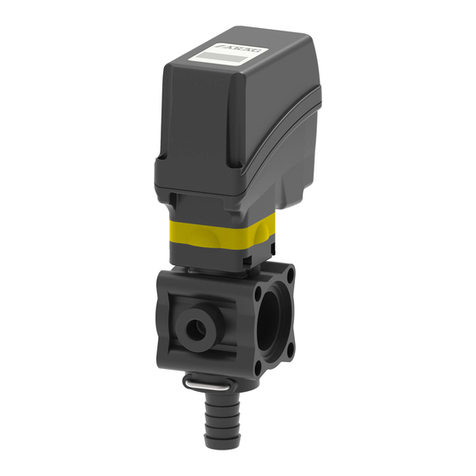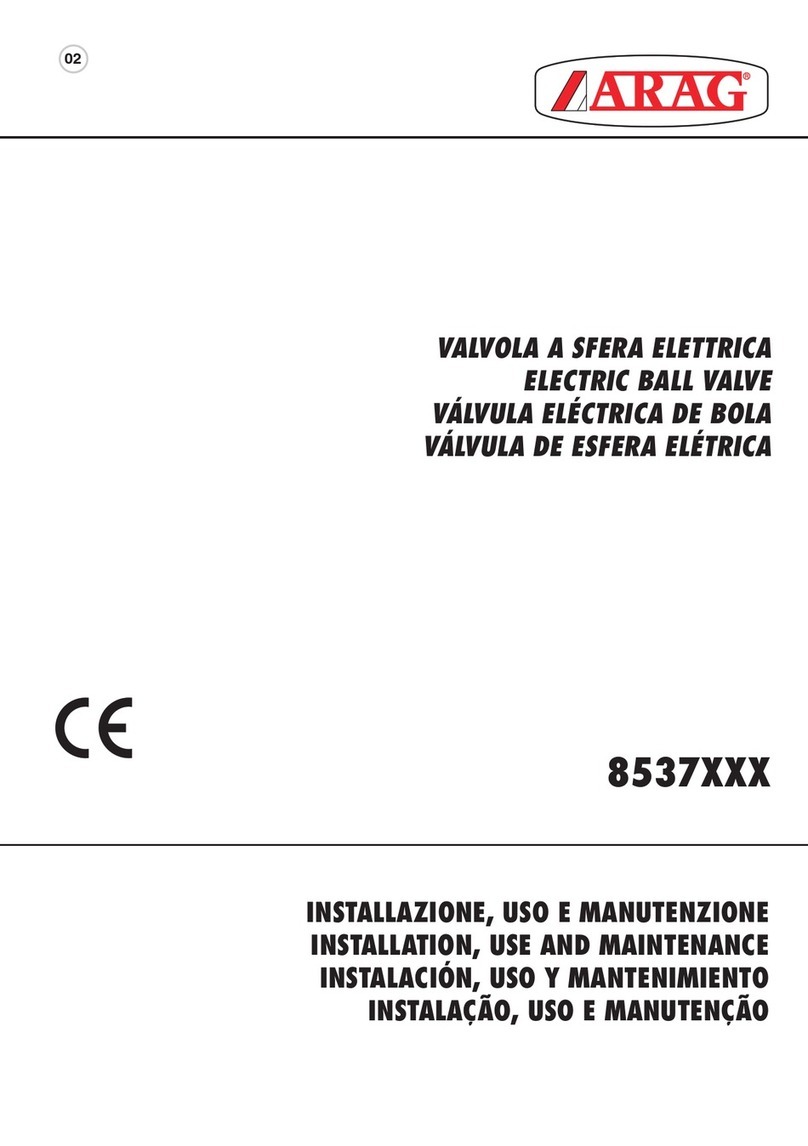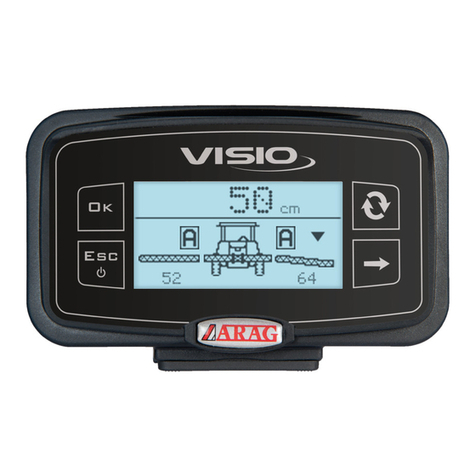
This manual is an integral part of the equipment to which it refers and must accompany the equipment in
case of sale or change of ownership. Keep it for future reference; ARAG reserves the right to modify the
specications and instructions regarding the product at any time and without prior notice.
CONTENTS
• Legend symbols .............................................................................................................................. 2
1 Product description............................................................................................................................. 3
1.1 Intended use ............................................................................................................................. 3
2 Functioning of the product.................................................................................................................. 4
2.1 Composition of the manual control units...................................................................................... 4
2.1.1 Manual control units with 471 SERIES main control valve ......................................................... 4
2.1.2 Manual control units with 464 SERIES main control valve ......................................................... 5
2.2 Functions of components .......................................................................................................... 6
3 Installation .......................................................................................................................................... 7
3.1 Safety regulations...................................................................................................................... 7
3.2 Installing and connecting the unit................................................................................................ 8
3.3 Connecting up the system.......................................................................................................... 9
4 Settings before use ............................................................................................................................11
4.1 Adjustments of the manual unit prior to operation .......................................................................11
4.2 Adjustment of maximum operating pressure (only applicable for units with proportional ...................
valve) 13
5 Use .................................................................................................................................................... 14
5.1 Calibration of operating pressure .............................................................................................. 14
5.2 Calibration of compensation cocks (calibrated backflows) .......................................................... 15
6 Maintenance / diagnostics / repairs .................................................................................................. 16
6.1 Cleaning the manual control units............................................................................................. 16
6.2 Cleaning the filters................................................................................................................... 17
6.2.1 Manual cleaning ................................................................................................................... 17
6.2.2 Automatic cleaning of self-cleaning filters............................................................................... 18
6.3 Troubleshooting ....................................................................................................................... 21
6.3.1 Troubleshooting - Units with constant pressure....................................................................... 21
6.3.2 Troubleshooting - Units with proportional valve ....................................................................... 22
7 Technical data ................................................................................................................................... 23
7.1 Correspondence between valve parts and maximum valve pressure .......................................... 23
7.2 Correspondence between valve type and flowrate ..................................................................... 24
7.2.1 Legend symbols ................................................................................................................... 24
7.2.2 Main control valve................................................................................................................. 24
7.2.3 Maximum pressure valve....................................................................................................... 24
7.2.4 Proportional valve ................................................................................................................. 25
7.2.5 Boom section valve............................................................................................................... 25
8 Disposal at the end of service........................................................................................................... 25
9 Guarantee terms................................................................................................................................ 26
10 Conformity Declaration ..................................................................................................................... 27
• LEGEND SYMBOLS
=Generic danger
=Warning
